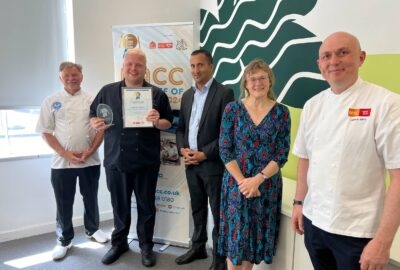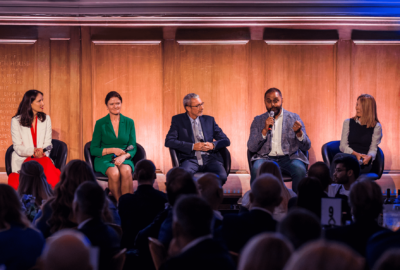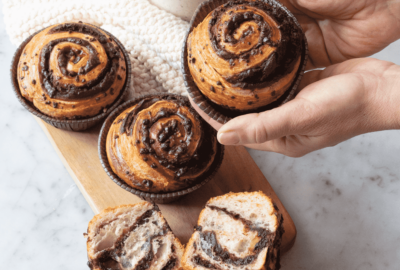The hot beverage category is booming and spans all sectors of foodservice. As a nation, we glug a staggering 100 million cups of tea and 95 million cups of coffee every day – so there’s huge scope for caterers to brew up fantastic profits.
Café culture has been fully embraced by consumers, and hot drinks menus these days can be as lengthy and detailed as food menus. From turmeric lattes to yerba mate tea, what should you be ‘pouring’ their efforts into?
Premiumisation
Quality is key when it comes to choosing hot drinks brands, particularly for Millennials.
“The millennial movement has majorly influenced the modern out-of home market, particularly when it comes to coffee,” says George Thomas, coffee brand manager, Aimia Foods, suppliers of the Café Nueva brand. “This is largely down to the fact that the palates and attitudes of young, coffee-loving consumers are rapidly maturing with many now expecting a better quality cup of coffee as standard, no matter if they are making a coffee purchase from a café, coffee shop, or via a vending machine.”
The same applies to the tea sector, according to Lucy McLean, marketing manager, Typhoo Tea. “We continue to see a trend towards premiumisation in the tea category. Through social media and out-of-home café culture, consumers are becoming increasingly savvy to ‘artisan’ consumption, with awareness rising around the complexity of how a humble brew is crafted from tea garden to tea cup.” Typhoo’s premium Ridgways of London brand provides outlets a wider opportunity to improve their offering with Fairtrade speciality choices like Earl Grey and English Breakfast, as well as fruit and herbal infusions and pure green tea.
Vibrant colours
With the ‘Insta’ generation constantly seeking out new and exciting foodie experiences to splash all over social media, hot beverages are being created in a rainbow of vibrant colours. Bright greens and regal purples are trending across food and drink with ube lattes – made from purple sweet potatoes with an amazing purple hue proving a hit in the US. Golden turmeric lattes and rich hot chocolates offer a more muted hue, whilst the fruity tones of strawberry, lemon and pineapple bring a taste of the tropics to flavoured teas.
The five big trends that are shaping the future of hot beverages, according to thefoodpeople’s Hot Beverages Report 2019 are:
1 TWISTED CLASSICS Upgrades for familiar favourites such as flat whites or comforting hot chocolate, such as expresso tonic or frozen hot chocolate, to offer a refreshingly different way to enjoy familiar drinks.
2 THE ANTI-PLASTIC MOVEMENT With single-use coffee cups coming under fire, the focus has shifted to find even more ways to make a difference to the health of the planet, from launching reusable water bottles in coffee shops to free waste coffee grounds for green-fingered consumers to use as compost.
3 CANNED COLD BREW Coffee and tea to enjoy on the go.
4 FLAVOUR REVOLUTION Creative flavour partnerships come to the category in a big way. From violet hot chocolate to pineapple cascara soda and pumpkin spiced lattes, it’s the additional flavour that stands out almost as much as the brew.
5 FUNCTIONAL DRINKS These continue to trend with an array of so-called ‘superfoods’ boosting hot beverages with their ‘do good’ claims. Added vitamins and gut health promoting ingredients. Three targeted functions gaining particular attention this year are skin health through the addition of collagen, relaxation (with the addition of CBD) and sleep aids such as lavender and chamomile.
Flavour sensation
Research by Monin reveals that 76% of coffee drinkers regularly experiment with different styles and flavours, and according to their beverage innovation manager Lee Hyde, operators who can show bold and innovative drinks will really reap the benefits. He explains: “Flat whites are continuing to soar in popularity and flavoured varieties are very much a trend that should be tapped into. “In addition, as health and veganism movements continue to gain traction, traditional hot drinks made with dairy-free alternatives are essential additions to any hot drinks menu.” Raf coffee is a trend not to be missed – made from espresso, milk, cream and flavoured syrup, all mixed together in a jug and then steamed.
Take care
The care sector is also under pressure to up the ante when it comes to hot beverages, says Steve Grylls, head of sales at Typhoo. “In an age when end users are being pressured by the big brands to pay more for a better customer experience, we feel there is still a vast opportunity to actually reduce spend whilst retaining customers through consistent quality. We find this particularly relevant in the more pricesensitive sectors such as care homes and healthcare.” Typhoo’s foodservice range is available in a variety of formats to suit different needs, including award-winning decaf blends.
Green credentials
As consumers become more concerned about sustainability, some operators are turning to 100% Rainforest Alliance Certified™ tea and coffee. Country Range has a comprehensive selection of both in a variety of formats from freeze dried coffee sachets and envelope teabags for front of house and hotel room welcome trays, along with Rainforest Alliance Roast and Ground Filter Coffee and 1100s teabags.
PG tips was the first major tea brand in the UK to source 100% Rainforest Alliance Certified™ tea and is now moving towards a new, fully biodegradable plant- based material in their pyramid tea bags.
Melting moments
Hot chocolate has seen the greatest growth of all hot drinks over the last year with 210 million served out-of-home (NPD Crest YE Data to March 2019). However, Ferrero Foodservice’s latest research shows a real disparity between key markets and the hot chocolate experience on offer. The survey lifted the lid on consumer attitudes and revealed only 8% have enjoyed a very good hot chocolate while traveling, 10% from a vending machine and 21% using in-room services.
Restaurants and cafés fared better, with nearly two thirds of consumers highly rating their hot chocolate experience (64% and 62%). Ferrero recently launched Thorntons Luxury Hot Chocolate Powder after their research revealed 75% of people would prefer a branded hot chocolate – rising to 90% if consumers knew it was made with Thorntons.
New opportunities
Hot chocolate presents the perfect opportunity to upsell – and customisation is key, says Anna Sentance, gourmet marketing manager, Callebaut UK and Ireland. She explains: “The addition of toppings and the use of different flavours of chocolate allows for customisation – something consumers are often happy to pay a premium for. As well as ensuring there is range of toppings, using real Belgian chocolate will give customers a lasting impression that will guarantee repeat sales.”
Simply stir 35g of Callebaut chocolate callets into 200ml of hot milk and serve. Callebaut produces quality ground Belgian chocolate and callets with varying cocoa content and flavours, including white, milk, dark, and caramel, meaning customers can choose a hot chocolate flavour to suit their exact liking.



